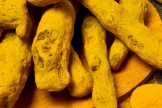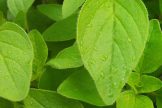
For anyone who loves Asian, or Asian-inspired cooking, coriander is an absolute must have in your patch. This fast growing annual, with a head a bit like Italian parsley, is an awesome backyard buddy.
Planting Time: All year (March –May for best results)
Position: Full sun – part shade
Water Needs: Moderate
Difficulty: Easy
How Long: 5 weeks
Position your coriander where it will receive some shade in hot areas – this is the secret to prevent it from bolting (premature running to seed). Go for full sun in temperate to cool areas unless you get scorching hot summers, in which case part sun is perfect.
Coriander, although it can be planted all year, tends to do best when planted in the cooler months of the year.
Like most herbs, coriander will do well in a container or in the vegie patch. Coriander loves nothing more than a rich, moist soil or, if planting in pots choose a good quality organic potting mix. These mixes are designed for container gardening and generally don’t have all the totally unnecessary synthetic fertilisers in them. If you’re planting in your patch, working in some lovely organic matter, like compost prior to planting is a top idea. Coriander will thank you for it!
Feeding coriander was once rumoured to prevent it bolting, but this is generally unnecessary if your soil is full of organic matter, like compost. If you feel the need for feed, a compost tea or liquid seaweed fertiliser is all that is recommended.
One thing that will make coriander bolt is an erratic watering schedule. A soil with heaps of organic matter and a nice mulch layer will keep moisture in the soil longer, but check soil moisture levels regularly. This applies especially to coriander grown in containers, as pots (especially terracotta) will dry out incredibly quickly. Coriander left to dry out thinks its days are numbered and bolts, so monitor the soil moisture and water when needed.
Like a lot of our favourite home-grown herbs coriander can be eaten all the time. Wait until the foliage is about 20cm high as the flavour tends to be best at this time. To harvest and eat, either chop off the foliage as required or pull the whole plant out of the ground (a bit like you would a carrot) and use everything. The entire coriander plant can be used in cooking – leaves, stems and roots and they are dead easy to prepare.
Coriander, generally speaking, suffers from very few pests or diseases. In fact, coriander is often used as a good neighbour in companion planting. This is due to the smell of the plant being unappealing to insects and the rest. As we have learned, coriander bolting is probably the biggest issue. But even this can be prevented by following the instructions above or by choosing “slow bolt” varieties at the nursery.
If your plants do happen to bolt and set seed don’t despair. Just cut off the seed heads, take them inside and dry them out on a bit of baking paper. Once dry, the seeds can be stored and used for some entirely different kitchen flavours! Too easy!




